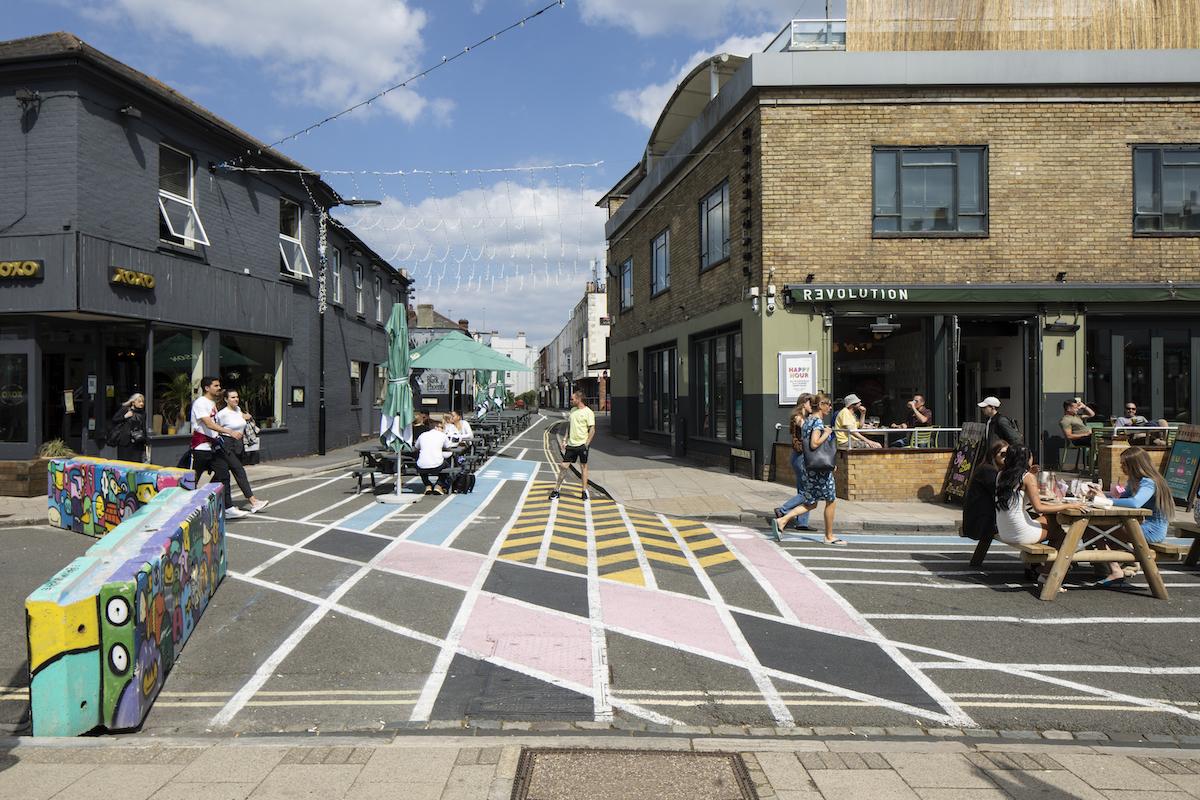This post, written by Amanda Moore in collaboration with Studio BAD Architects, explores reasons to work towards a frugal architecture. Four design case study projects will follow, in separate posts, covering a variety of sectors in order to interrogate the credibility of a rebalance between the amount of construction and end user ‘benefit’.
It has been long-established in human society that growth is innately linked to progress. It may be a natural urge within us to grow and produce.
Rising GDP is linked to growth and political success. However, it is also being linked to rising environmental impact in terms of increased materials and energy needed to produce and use goods. Should we scrap using GDP as a measure of success in favour of a happiness index, (www.world happiness.report), if we really feel the need to rank ourselves against other countries?
De-growth is an economic theory born in the 1970s which looks at the merits of shrinking economies and saving the earth’s resources. There is good reason to fear de-growth, being able to pay for public services through taxation for example. Should we reduce production and growth and hence our working hours? Or, can we have the same amount of a greener-growth?
If we need financial growth to pay for services, can there be a reduction in some less beneficial sectors such as carbon-intensive food production including meats, cheap fashion and other cheap products and new-build construction? Could we see an increase in other sectors such as skills and education, leisure, health, public transport and other services which are less carbon-intensive by nature and may provide more satisfaction and enjoyment to end-users.
In architecture, should there be a post-growth movement? Architects Declare notes a pledge to ‘Upgrade existing buildings for extended use as a more carbon efficient alternative to demolition and new build whenever there is a viable choice’. This architecture wouldn’t serve to start with maximising building on a site for profit, but look to re-use existing buildings and sites for maximum gain and enjoyment to end users. Should this idea be part of the RIBA and ARB’s ethics codes?
Within the various large practices I’ve worked for, projects mainly focused on maximising the amount of building on a site in order for the client to afford the construction costs and make a profit, particularly if expensive demolition and foundations were involved. Production to afford production. More construction is seen as the only ‘viable’ choice by many developers.
Architects may start with a smaller budget project and then encourage their client to go for a much larger one. This in part ensures a steady stream of fees, a bird in the hand is better than a hundred competitions in the bush. Charging based on a percentage of construction value rather than man-hours used can encourage architects to push clients to go for more construction. Taking on bigger and bigger-costed projects with the greater indemnity insurance and staffing requirements that can entail can then result in practices having to continually power up and up like a pyramid scheme, working to keep a bloating practice afloat.
More time should be spent on the feasibility stages of built environment projects to determine the actual needs of the local community and do the building work actually required, then determining the lowest embodied and operational carbon options. This feasibility service by architects should always be paid for by clients, not given by architects in the hope of winning/creating a lucrative and prestigious project to work on at the end.
A friend who isn’t an architect once asked me, ‘haven’t architects built all the buildings?’ which seemed like a naive comment at the time. In actuality, there ARE a lot of buildings, and refurbishment and reuse could have been employed on most of the large projects I have worked on in practice before starting work as a freelancer, bar railway infrastructure projects.
Nowadays, most of the projects I work on are light-touch public space projects, installing artworks and outdoor furniture to activate underused spaces. Many are refurbishments, particularly for church buildings which require adjustments for custodians to carry out community-serving activities. Refurbishment has been forced onto many Christian churches who are trapped within their large, beautiful, historic listed buildings which are difficult to heat in the UK winters. Light-touch approaches over demolition are the only viable ones such as partitioning parts of the building which can be more efficiently heated, or using buildings seasonally. Going in with large and expensive technology such as air source heat pumps may also not be the best solution for older, less airtight and insulated building stock and may not solve the carbon problem when there is no wind or sun to run them in winter. At Studio BAD we work as a network of disciplines including design, building physics, building services, planning, costing and delivery/material sourcing from the outset to evaluate and test the best options in terms of cost, community benefit and environmental impact.
Materials should also be specified in relation to the lifespan of the building or it’s intended use, ie; is carbon-intensive concrete required for a new building or refurbishment which may only be used for 10 years, is a client willing to use materials which are less carbon-intensive but require more maintenance? Do buildings have to be made of the most robust/static and maintenance-free materials to retain their financial value to a client?
So, what are architects offering clients and the community and what could they offer with frugality being given priority in their design processes? Can they still add value? Can this value be credibly measured by social and community impact? If it is still financial value to the landowner, should architects be paid in relation to how much money they actually save the client rather than spend in terms of the amount of building work which needs to be done?
